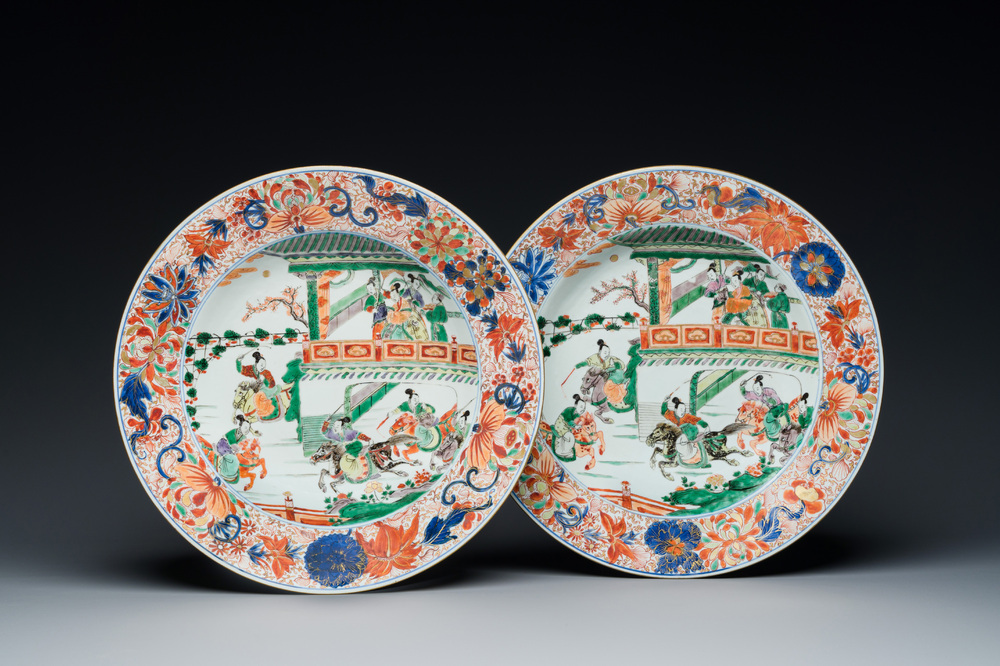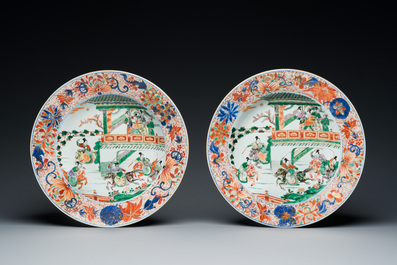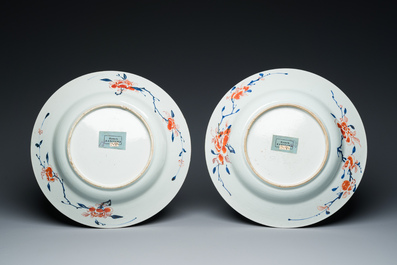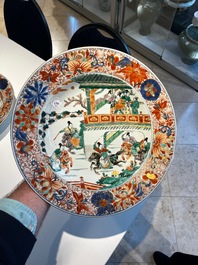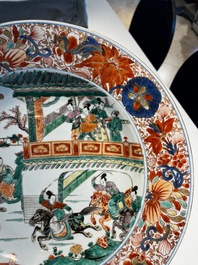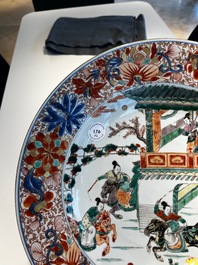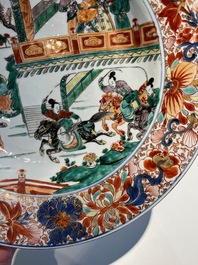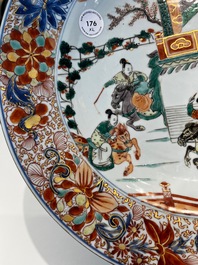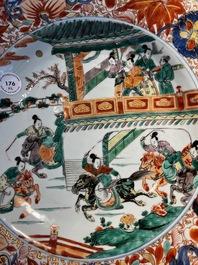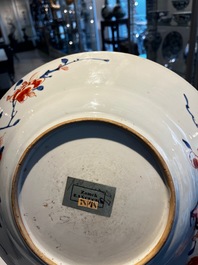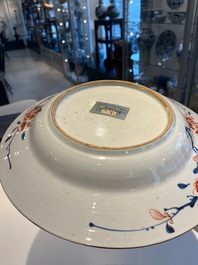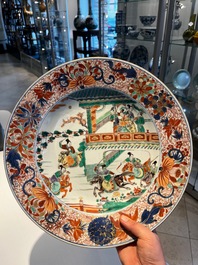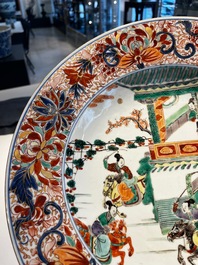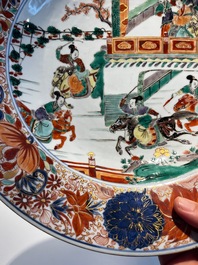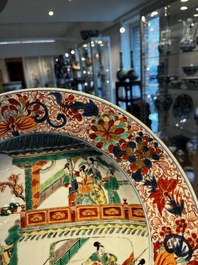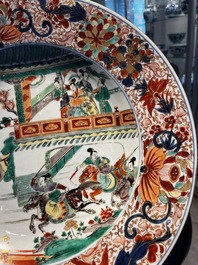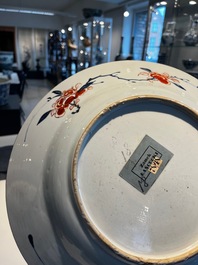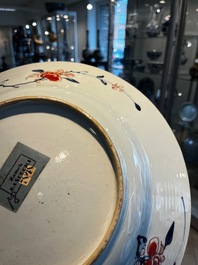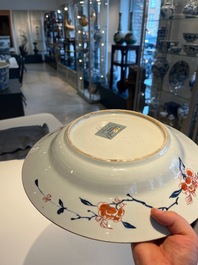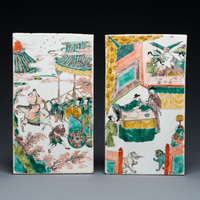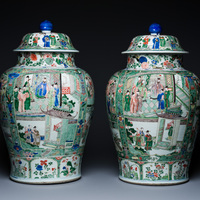We have to double-check your registration and make sure this is not an automated entry in our system. Please complete the test below...
A pair of Chinese famille verte 'Emperor Yang' dishes, Kangxi
Dia.: 34,5 cm
Condition: (UV-checked)
- Both in excellent condition with negligible normal superficial wear.
品相:(已用紫外线光检查)
- 一对全品。
Provenance:
- By repute, from the Collection of Duchess Isabella Lubomirska (née Czartoryska) (1736-1816), Lancut Castle, Poland.
- The Counts Potocki, Lancut Castle, Poland, until circa 1944.
- Paul-Louis Weiller (1893-1993), and thence by descent.
- An important European private collection.
Ref.:
- Jeffrey P. Stamen and Cynthia Volk with Yibin Ni (2017), A Culture Revealed: Kangxi-Era Chinese Porcelain from the Jie Rui Tang Collection, pp. 30-33.
- Emperor Yang of the Sui dynasty (隋炀帝, r. 606-18) is known for many achievements, such as linking the Yellow and Yangzi Rivers with the man-made Grand Canal, leading successful military campaigns expanding the Sui territory, and being accomplished in the arts. Despite those, Emperor Yang is also considered to have brought disaster to the country and misery to the people late in his life with his unwise rule and decadent and debauched lifestyle with his concubines. In the West Park, outside Luoyang, his consorts (wives who ranked lower than his primary wife, the empress) often organised his concubines to do equestrian performances and variety shows to entertain the emperor and please his inflated ego.
One of the best known of these vignettes was the procession of Lady Wang Zhaojun (王昭君, c. 52 – c. 15 BCE) in a moonlit night. (Lady Wang Zhaojun was one of the legendary Four Beauties of Ancient China. She had been in the harem of Emperor Yuan of the Western Han dynasty [汉元帝, 206 BCE – 8 CE]. He eventually sent her off by horseback in a procession to marry a Central Asian tribal chieftain.) The elderly Emperor Yang is often depicted enthusiastically observing his elegant court ladies showing off their riding skills in the spirit of Lady Wang, while anticipating further antics to follow.
This scene has often been mistaken as ‘female generals of the Yang family’(杨门女将) by many art historians. However, Dr Yibin Ni has found that historical woodblock illustrations such as that of the novel Romance of Sui and Tang (隋唐演义), and New-Year prints such as Wang Zhaojun’s Galloping Horses (新彩昭君跑马) bear similar scenes with clear written titles which reveal that the scene is actually meant to be a cautionary tale for rulers. Chu Renhuo (褚人获)’s Romance of Sui and Tang fictionalises the historical events leading to the fall of the Sui dynasty and the subsequent rise of the Tang. (source: tutuhaoyi.com)
